










Looking at the present industry statistics, it is clear that in-house talent development is much more beneficial than hiring temporary professionals. When employees are trained and educated for skills required in the company, they feel more competitive and relevant to the company environment. This also builds higher job satisfaction and retention. In addition, these employees better understand the organizational goals and how to achieve them without failure. To be precise, skill gap analysis and skill development have become most relevant in today’s environment, unlike previously.

Skill Gap Analysis kick starts the process and moves the process in the right direction. Done with the right intention and attitude can boost learning and development and build the right skillset among employees. There are two steps in the skill gap analysis process.
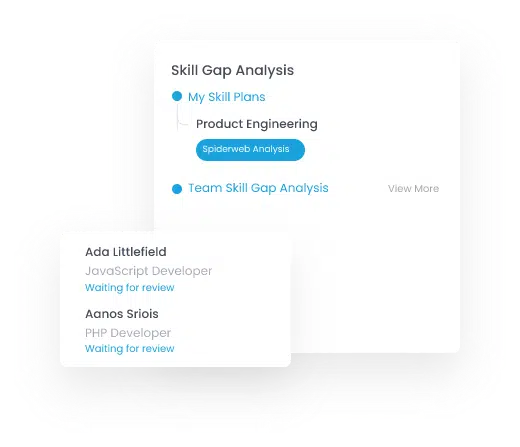
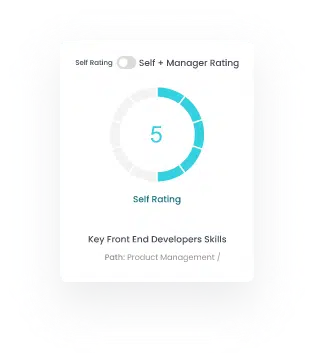
In this step, employees rate themselves based on their analysis and understanding of the skills they require for their specific job roles. Rating is done on a scale of 0-10 to decide how efficient he is, as per his interpretation of his roles.
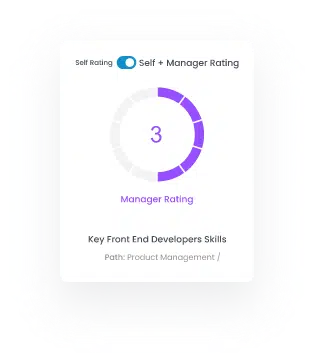
Simultaneously, how the manager analyses and provides feedback about the employees can differ from the employee’s self-rating. Having a manager rating provides two viewpoints to be highly confident of the gap analysis of subordinate employees.
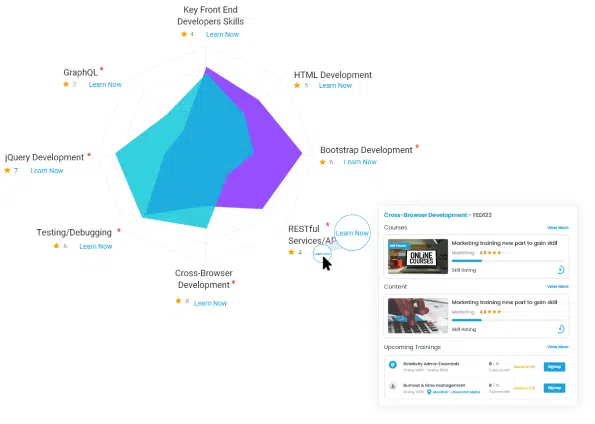
The ratings are represented on a spider-web diagram to understand the mergers and gaps between ratings and eventually decide the courses required for upskilling the workforce. In addition, the diagram covers self and senior perspectives about employees’ skill gaps in a diagrammatic representation.
The above diagram is for reference, and the dimensions change as per an individual’s skills. The different colors represent self and manager rating on the scale. Overall, it helps to distinctly conclude the more vital skills and skills that an employee lacks when in a specific job role.
Course recommendation is a crucial component in learning and development. Analyzing and studying the skill gap analysis becomes successful only when the employee gets trained and gains the required knowledge to upskill or reskill themselves.
Get the skill development Learning Management System that analyzes and recommends system-generated courses that employees can take up to build their skill set at their own pace. The platform makes it possible to have the skill-building courses at their fingertips instead of waiting for in-person training programs to happen in the future.
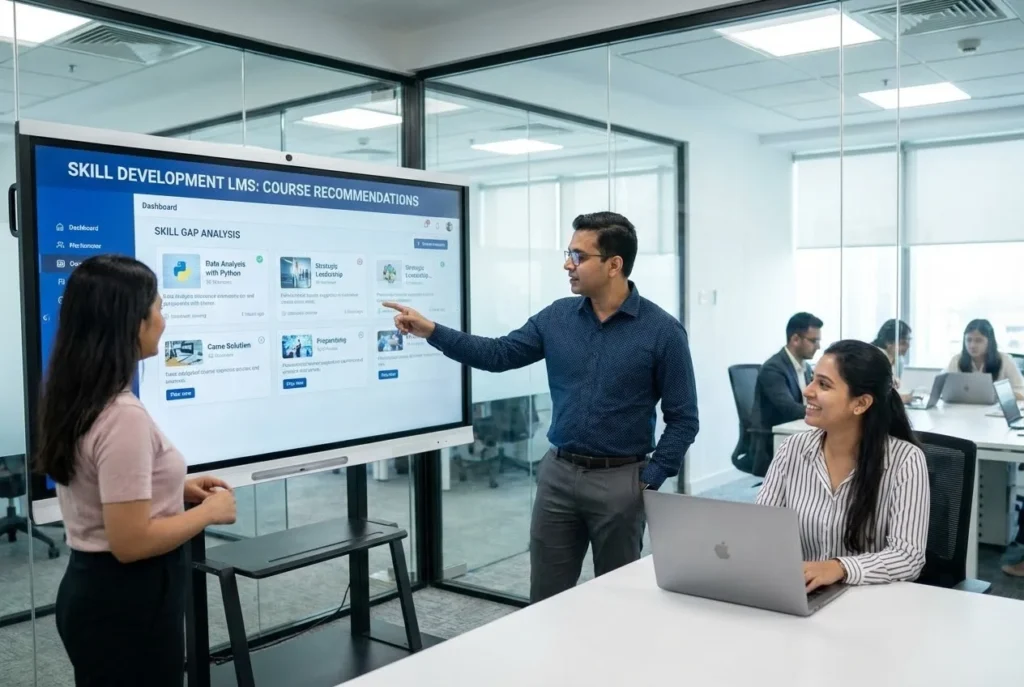



Once you identify what to train and how to train, you can achieve significant levels of training effectiveness. When training is effective, the employees develop the appropriate knowledge base to outperform in their job roles and achieve goals aligned with organizational goals. Each organization has different requirements and skilling people as required becomes easy with skill development software.
Get the Skill development platform and plan to achieve your organizational goals today!
LMS Integrations

Skill gap analysis is the process of identifying the difference between the skills employees currently have and the skills they need to perform their roles effectively. It helps organizations understand where training or upskilling is required.
Skill gap analysis helps businesses improve productivity, reduce performance issues, plan effective training programs, and stay competitive. It ensures employees have the right skills to meet current and future business goals.
A skill gap analysis typically involves defining required skills, assessing current employee skills through evaluations or assessments, identifying gaps, and creating targeted learning or development plans to close those gaps.
Common tools include skills assessments, surveys, performance reviews, LMS platforms, competency frameworks, and AI-powered analytics tools that track skill progress and recommend learning paths.
HR teams, learning and development professionals, managers, and organizational leaders usually conduct skill gap analysis to align workforce capabilities with business objectives.
Yes, most skill gap analysis solutions offer a free demo to help organizations understand how skills are assessed, gaps are identified, and personalized learning paths are created. A demo allows you to see real-time dashboards, reporting features, and how the system aligns training with business goals before making a decision.

A scalable, AI-powered learning platform with advanced analytics and mobile access—built to drive performance across your organization.

Rapidly create professional, interactive courses with AI-driven course-building tools tailored for business training.

Access a curated library of certified, industry-relevant courses to upskill teams, ensure compliance, and accelerate growth.